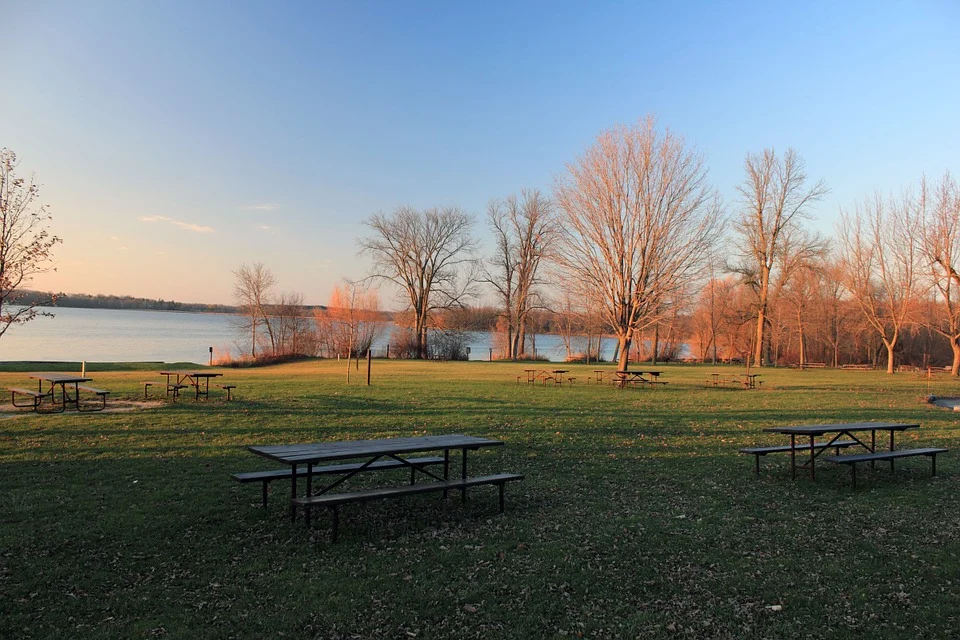Providing people with a place to sit and eat at their destination point enhances their enjoyment. Picnic areas add value to beaches, walking paths, hiking trails, bicycle routes, and parks. People are more inclined to stay longer if they have a seat and a chance to relax.
Picnic areas come in many shapes and sizes. Some of this will be determined by the space’s size and how many people use it. Other features, on the other hand, are at the discretion of the designer. When developing a picnic area, aim to satisfy the greatest requirements first.
You guarantee that the majority of people will have a lot of fun by building an adaptable, useful place. These five pointers are meant to assist you in creating the ideal picnic spot. Combine these ideas with the demands of your area to build the perfect location.

1. Flexible Seating
Not everyone uses a table in the same way. Picnic areas are used by children, adults, and persons with impairments. You make the location more accessible to everyone by providing adjustable seating options.
This may imply adding a few lower tables for youngsters. Or, it might imply including some picnic chairs with backs for those who require assistance. Combine various arrangements and sizes of tables in one space and utilize the same materials and general design principles. This generates a coherent aesthetic that still gives optimum usage and pleasure.
The greater your area, the more options you have. If you have a small picnic area, consider utilizing tables with a range of bench types. Users will still be able to make selections even if there are fewer tables available.
2. Hydration Stations
Picnic areas may be found in a variety of settings. People who use them are most likely to be engaging in some sort of physical activity. As a result, adding a bottle filling station can increase the utilization of the site.
Hydration stations are available throughout the park, allowing visitors to hydrate their dogs, fill bottles before leaving, or simply get a drink while they eat. A hydration station would unquestionably aid in keeping people at the park longer.
Make sure the hydration station is in a prominent area. It should be apparent and accessible to everyone who visits the attraction.
3. Well-Marked Sections
Is there a path to your picnic area? Are restrooms available? Do you have a bottle filler or a grill? Take the time to label any of these features at your picnic area with signs if they exist.
Signs take the guesswork out of locating your destination. Whether you have one large map of all nearby routes or numerous little signs marking the area, making use of it is simpler and more pleasurable. This can also assist in preventing people from entering areas they shouldn’t be.
Make sure your picnic area is properly identified. For the best results, include not just the location but also any nearby attractions or services.

4. Grilling Stations
Picnic areas with grilling stations are common in large parks. Grilling stations allow customers greater freedom over how they will use the site. Users can have tiny gatherings at the picnic area or plan to stay for the day by adding a grill. Having several grills and picnic areas is useful in larger parks to accommodate more visitors.
For safety, use grills that are made of wood or charcoal. Because guests can bring their own fuel, it doesn’t need to be kept at the picnic area.
5. Shade
Consider using a secluded area in your yard for the picnic site. Natural shade over picnic tables enhances usage by providing a cooler location out of the sun.
You encourage guests to stay longer by providing shade in the picnic area. If visitors don’t have to worry about the weather, they may unwind.
Create the Perfect Picnic Area
Picnic areas come in a variety of shapes and sizes, so you may personalize yours to meet the demands of your visitors. Make the area as simple as possible to use for maximum utilization. Provide adequate seating, shade, hydration, and cooking options for optimum enjoyment. You’ll soon discover that people are flocking to your picnic site.

